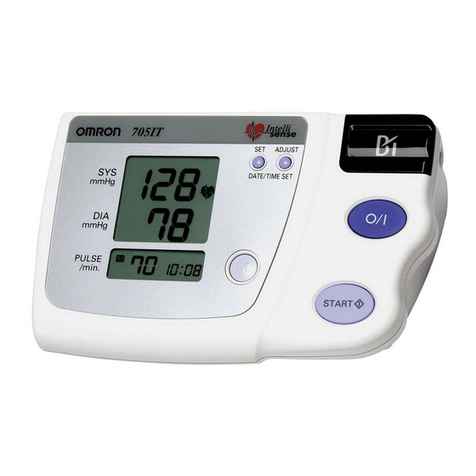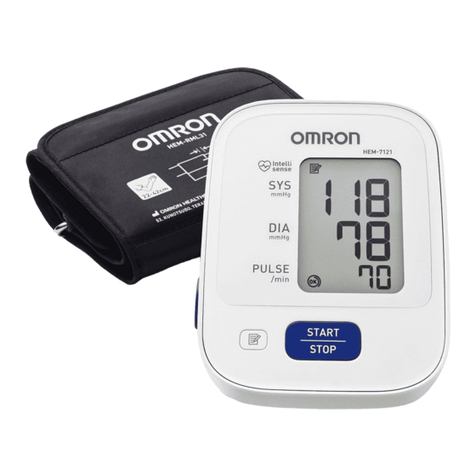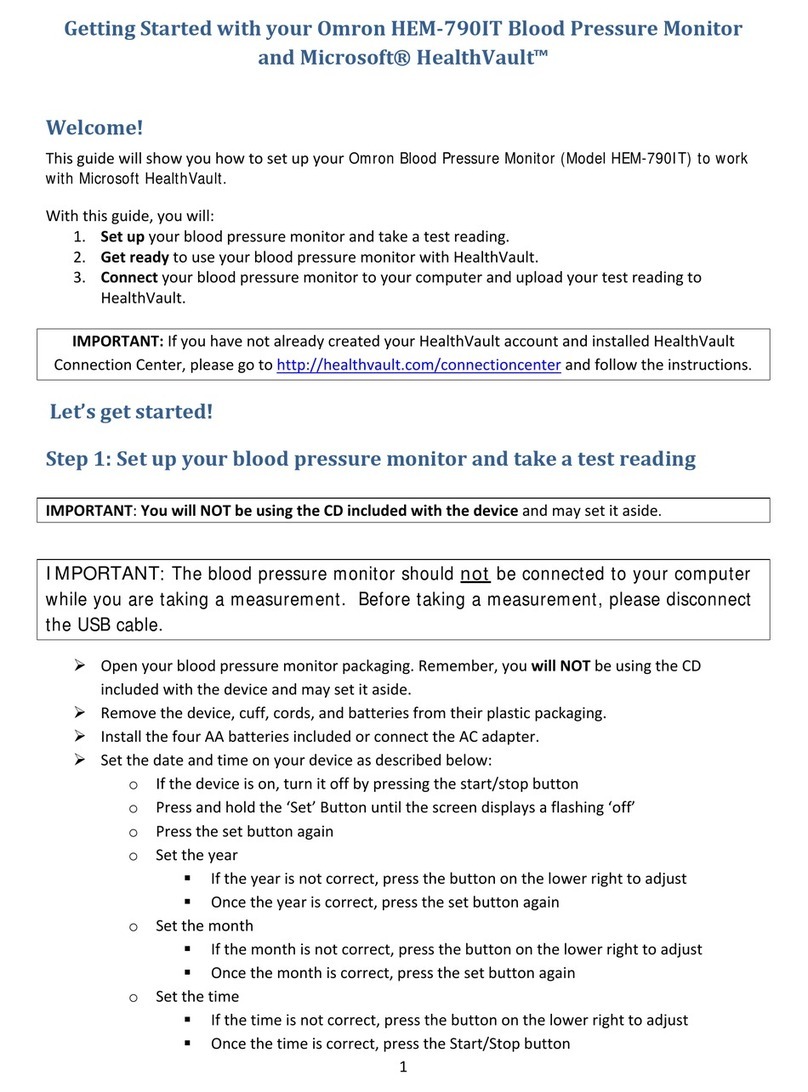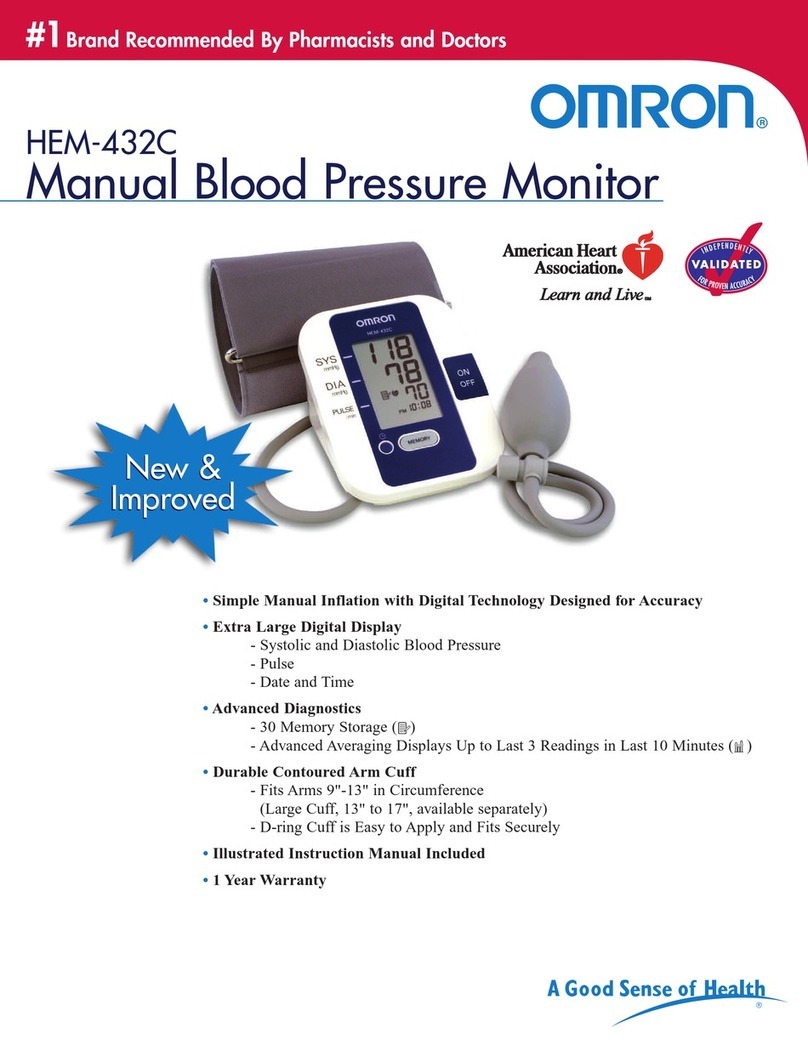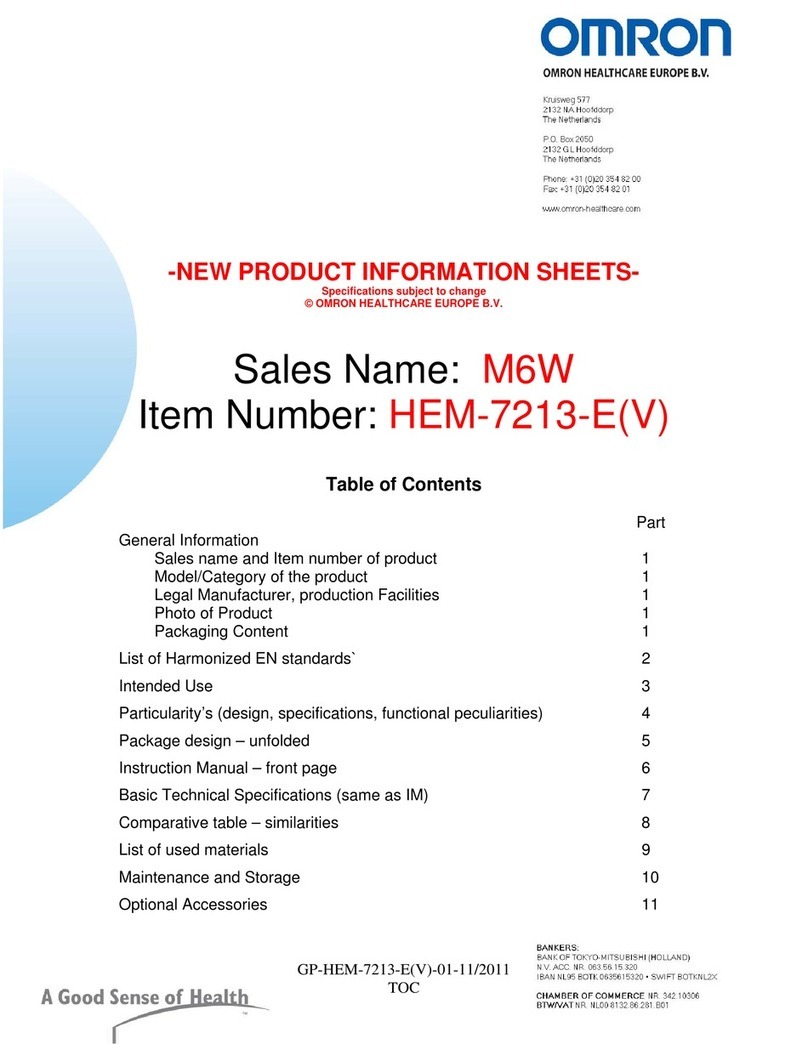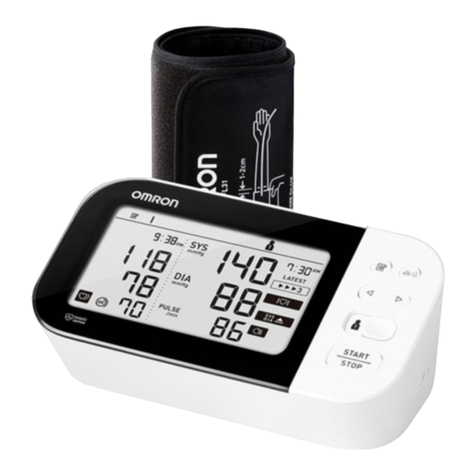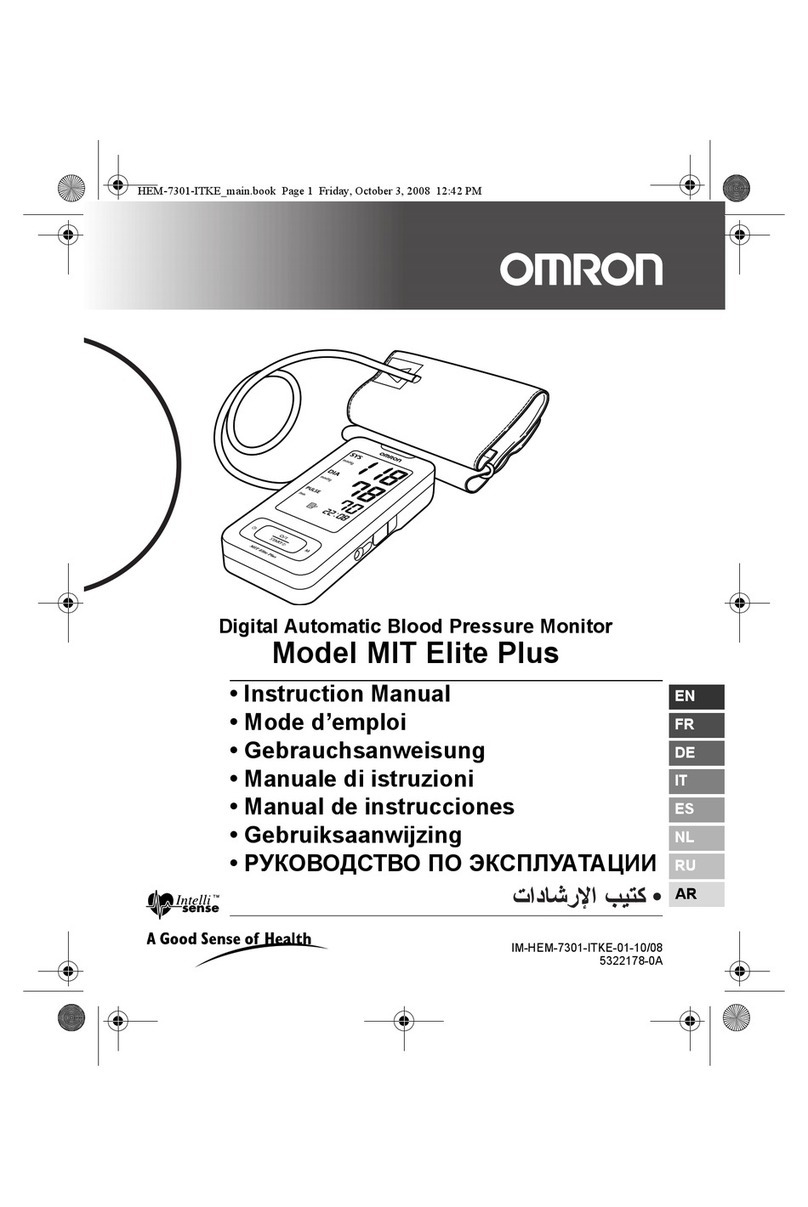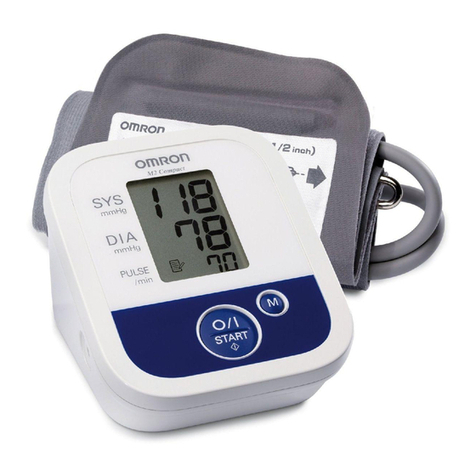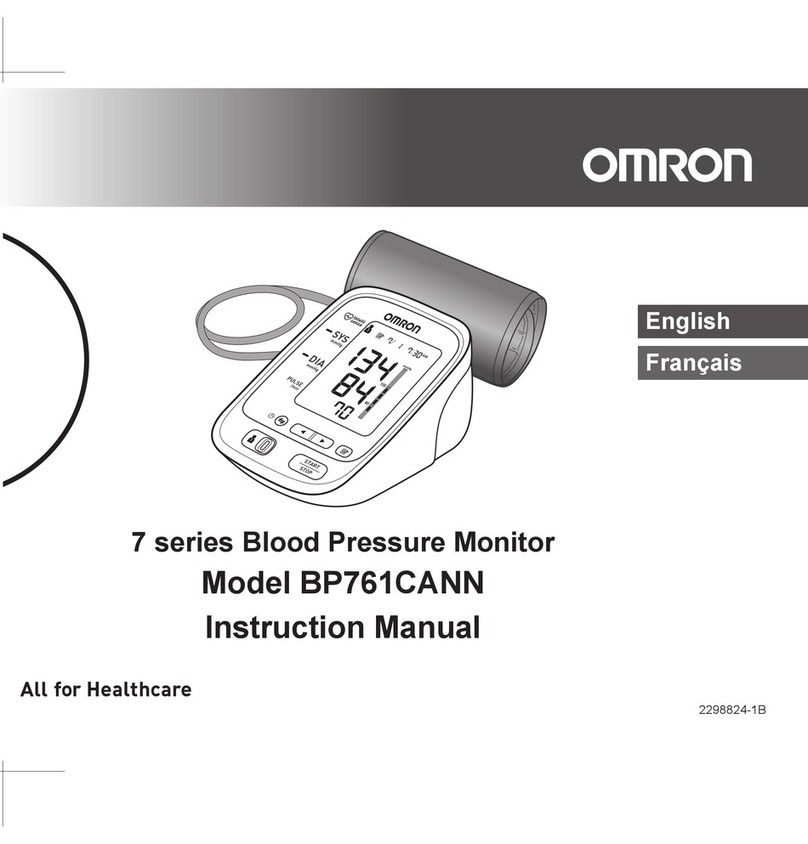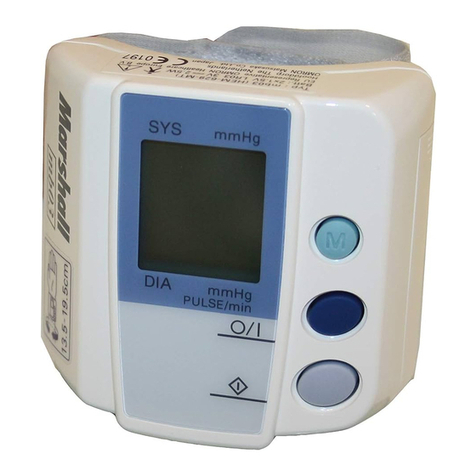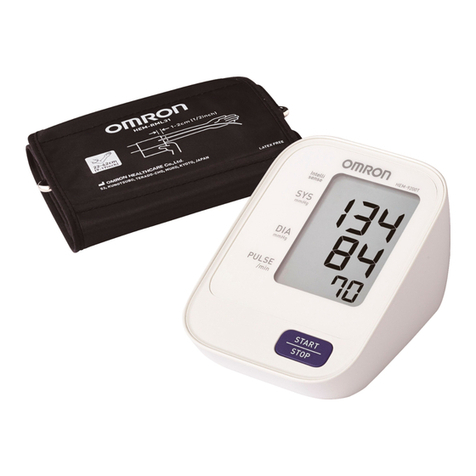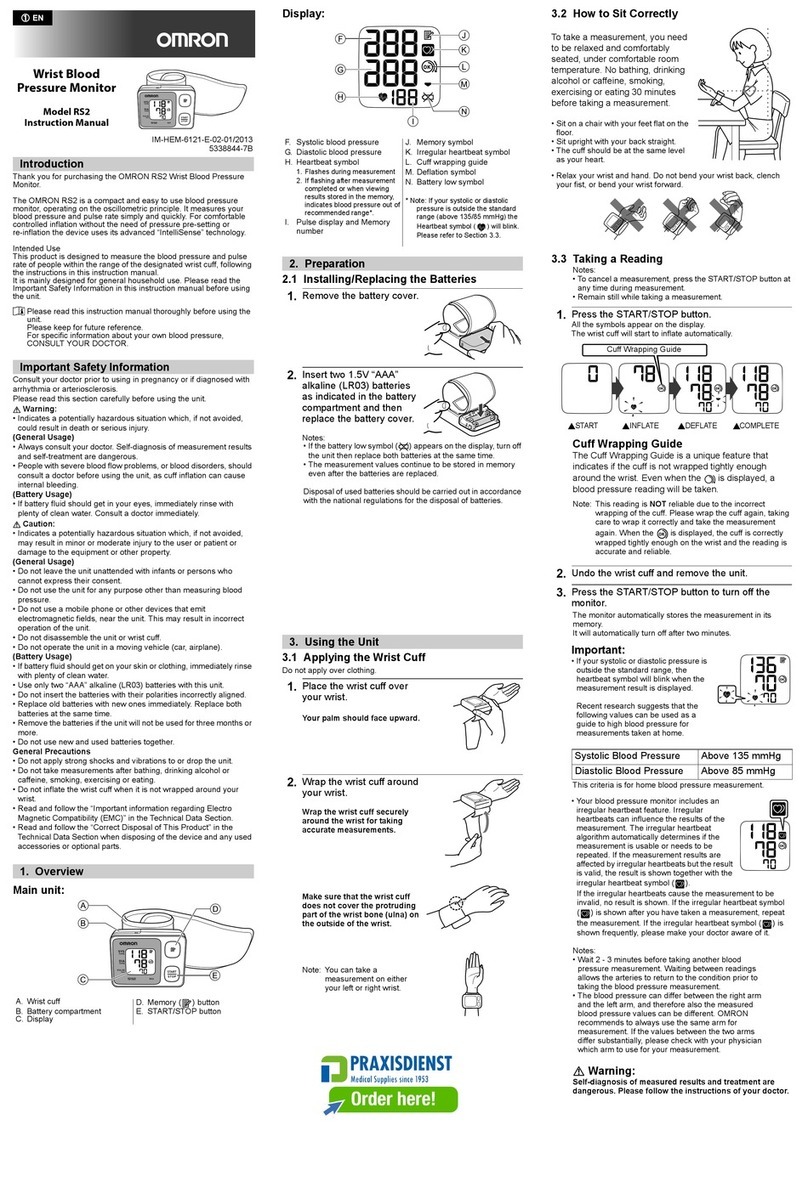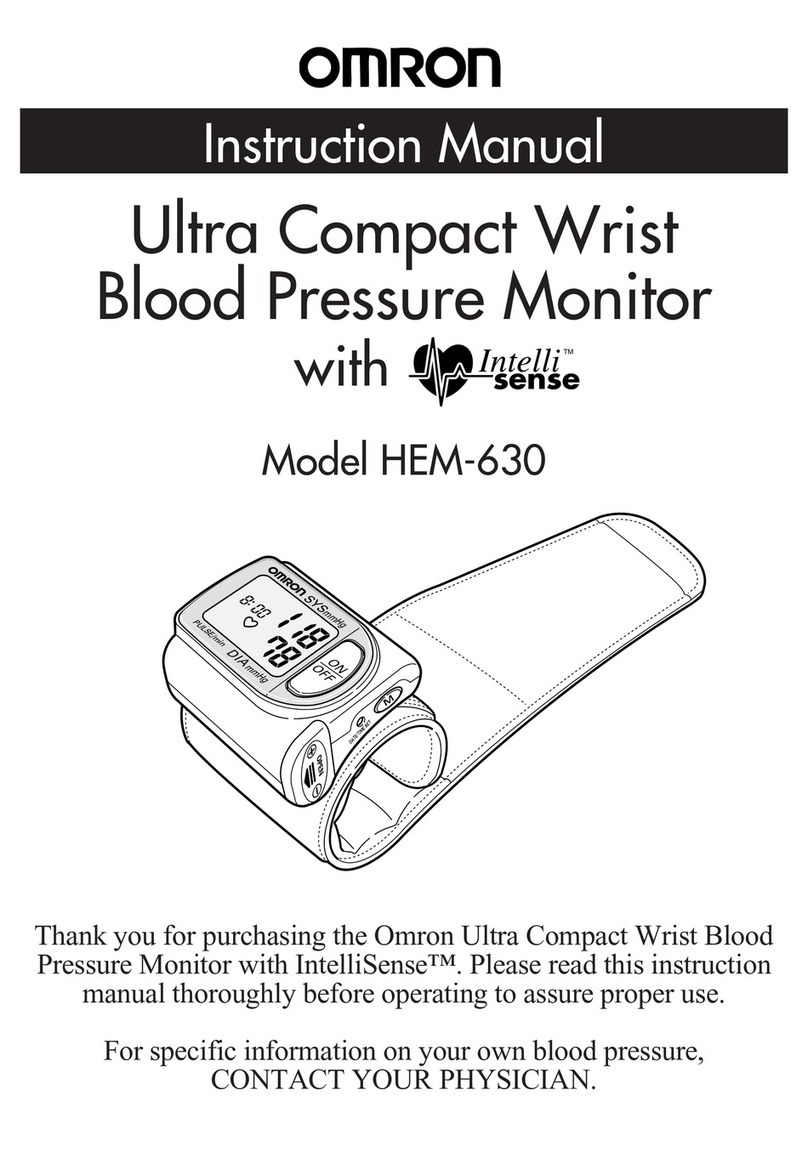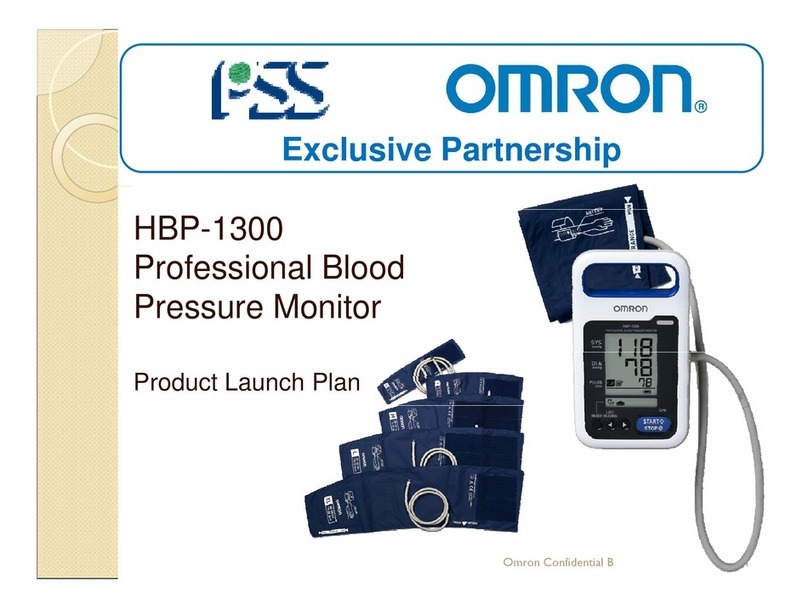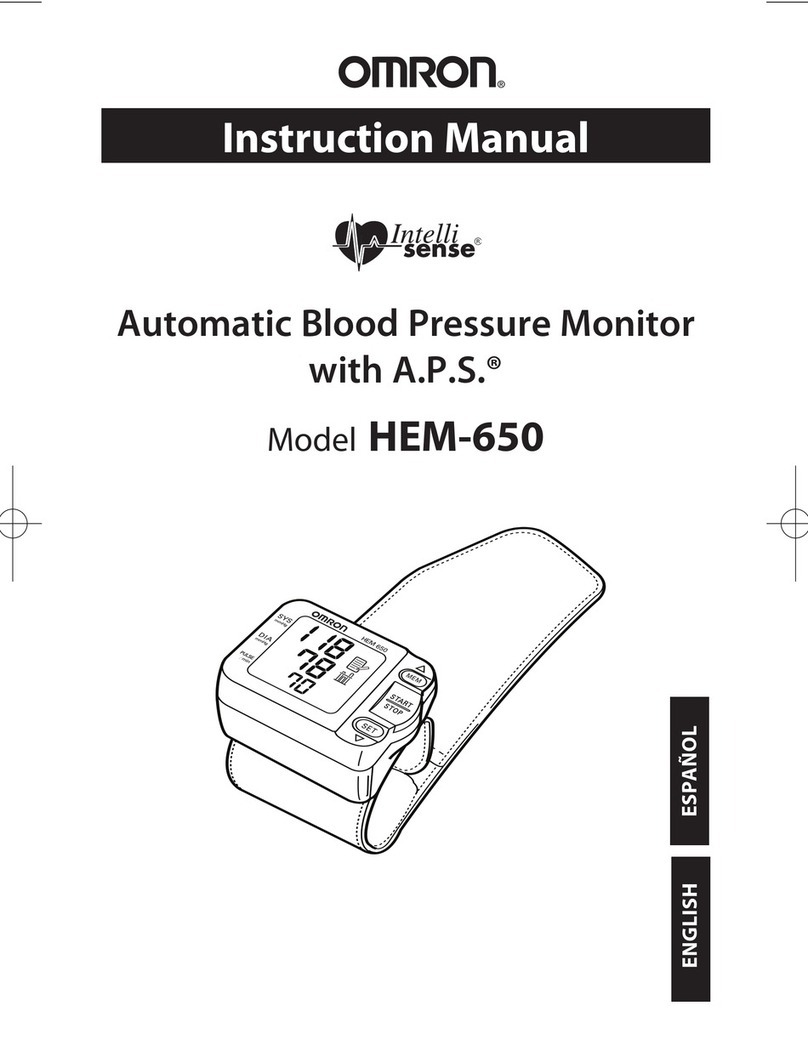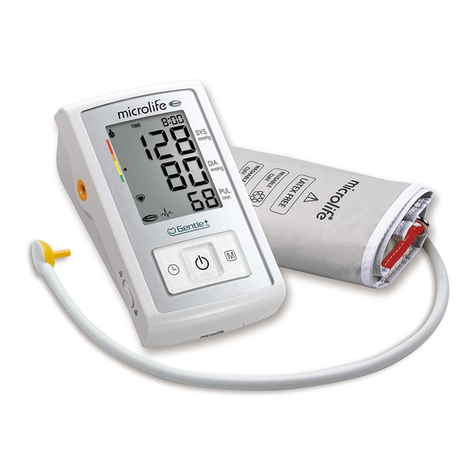4
Caution
• Do not install the unit in the following locations:
- Locations with dust, salt, or sulfur.
- Locations directly exposed to sunlight for extended periods of time (in
particular, do not leave in direct sunlight or near a source of ultraviolet
light for extended periods, as ultraviolet light will cause deterioration
of the LCD).
- Locations subject to vibration or shock.
- Near heaters.
• Do not use the unit near large equipment that uses a switching relay for
power ON/OFF.
Beforeuse/duringuse
Warning
• The unit complies with the EMC (Electro Magnetic Compatibility)
standard (IEC60601-1-2). As such, it can be used simultaneously with
multiple medical instruments. However, if instruments that generate
noise such as an electric scalpel or a microwave therapy device are
near the unit, check the operation of the unit during and after use of
these instruments.
• If an error occurs or a measurement result is questionable, check the
vital signs of the patient by auscultation or palpation. Avoid relying
solely on the measurement results of the unit when judging the patient’s
condition.
• Only trained healthcare providers should use this device. Do not allow
patients to operate this device.
• Properly connect the connectors and AC adapter cable.
• Do not place objects or liquids on top of this unit.
• Check the following before using the unit:
- Make sure the AC adapter cable is not damaged (wires are not
exposed or broken), and the connections are firm.
•
For the AC adapter connected to the unit, supplies, and optional devices,
use only the standard accessories or OMRON-specified products.
• Do not use in a location with moisture, or a location where water may
splash on the unit.
• This unit is intended for use in physicians’ office, hospitals, clinics and
other medical facilities.
• Do not use the unit if it emits smoke, an abnormal odor, or abnormal noise.
• Do not bring cellular telephones or transceivers into the room where the
unit is installed or being used.
• Do not connect multiple monitors to the same patient.
• Do not connect the unit to a power outlet that is controlled by a wall
switch.
